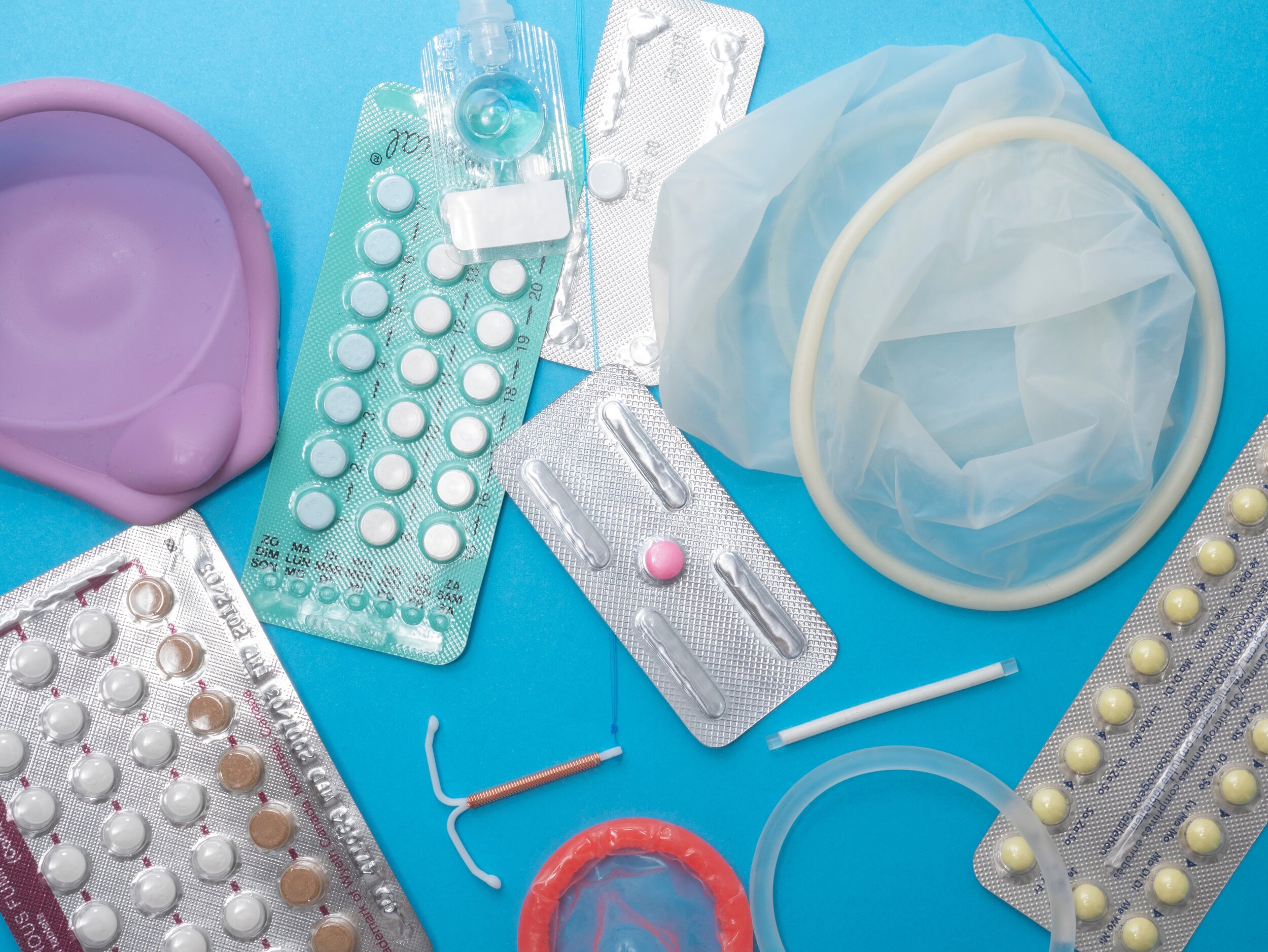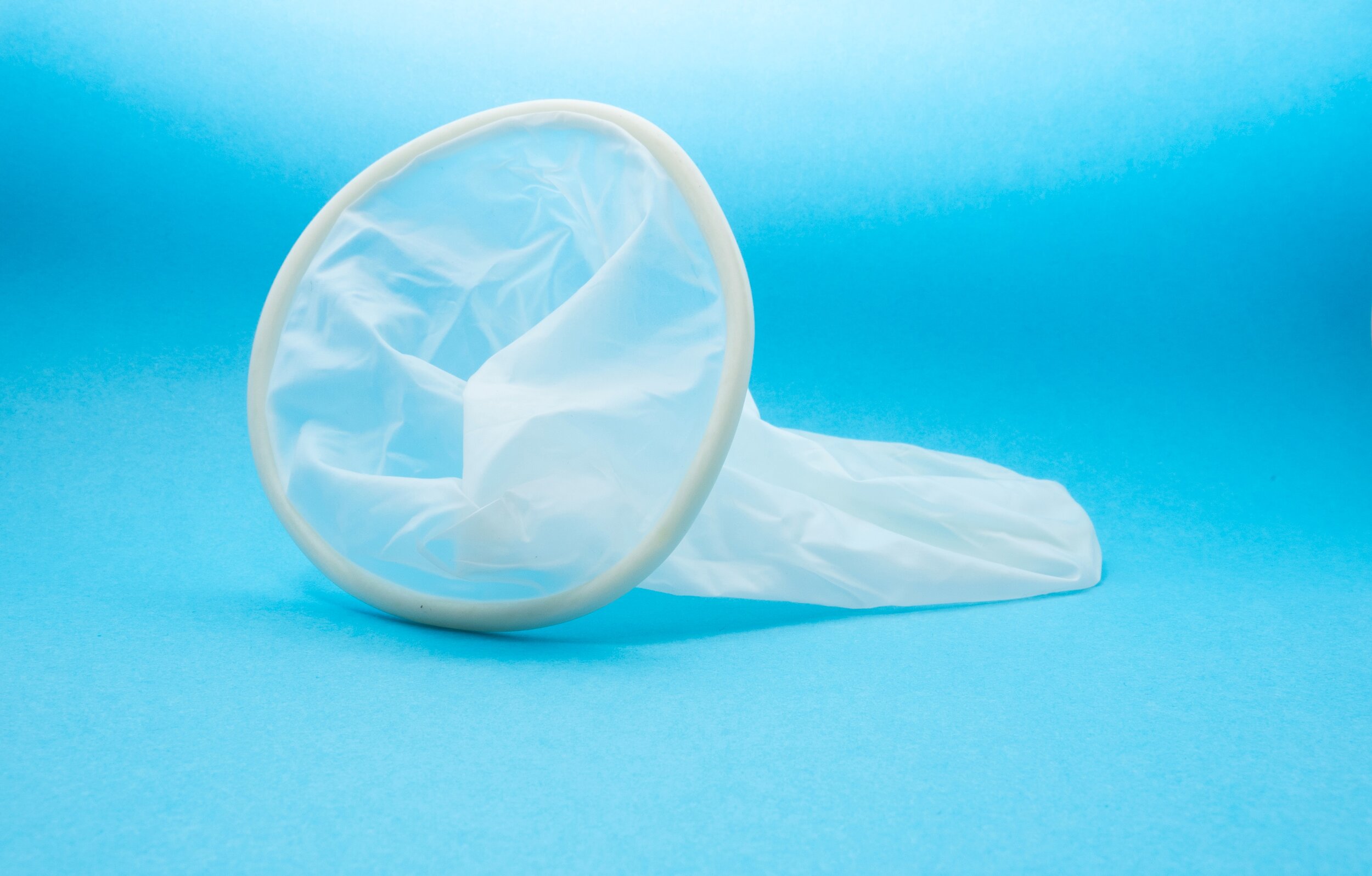What Types of Birth Control Are Best for Me?
One of the many ways to have a more sex-positive education is to understand that contraception goes beyond abstinence. While it's an excellent method for those who make the personal decision to remain abstinent, it isn’t ideal for everyone. Thus, learning about the many types of birth control — whether it’s choosing the best condoms, figuring out if you want to alter your hormone levels, are seeking something short-term, or even are looking for a permanent fix — is essential.
Today, we’re talking about fifteen different birth control methods. All can be considered for penis-in-vagina sexual intercourse, whether you’re sleeping with someone new or in a long-term relationship. Please note that the purpose of this article is to explain the best birth control methods to prevent pregnancy. This does not mean that they are also the best ways of preventing sexually transmitted infections.
External condom
Perfect use: 97% effective
Average use: 86% effective
Worn over the penis, the best external condoms are made from latex, polyisoprene, or polyurethane. Condoms can also be purchased with varying external textures, which can change the sensations of intercourse within the vagina.
Packages should be opened slowly, avoiding using teeth or long fingernails (to prevent puncturing the condom), and rolled on correctly. The rim should be on the tip of the penis; pinch this and roll it down over the shaft, ensuring that any ejaculate will be kept in the air pocket. External condoms should only be removed once the penis is outside of the vagina.
Internal condom
Perfect use: 95% effective
Average use: 79% effective
Internal condoms are inserted into the vagina, with the best condoms made from polyurethane or synthetic latex. While they can also be inserted into the rectum for anal sex (to prevent ejaculate from potentially dripping down into the vagina), they are not approved for this purpose.
Packages should be opened in the same manner as noted above, paying attention not to use teeth or long fingernails in the process. The ring on the closed-end should be squeezed together before being inserted into the vagina (guided in by the index and forefingers), in a way similar to inserting a tampon or eco-friendly menstrual cup. Be sure that the condom reaches your cervix, with the open end hanging out of the vaginal opening.
After sex, if there is semen inside the condom, twist off the open end and gently pull it out. Pay attention not to spill any as you remove it.
Intrauterine device (IUD)
Once inserted: over 99.9% effective
A health practitioner inserts an IUD into the uterus, which can work for up to ten years. Not only do they prevent pregnancy, but they can ease heavy periods, too. The decade of convenience this can provide you makes it ideal for impromptu one-night stands, travelling for sex (and not having to stress about taking a pill at a specific time each day), or fumbling with other birth control methods when attending a play party.
Vaginal ring
Perfect use: 99% effective
Average use: 91% effective
Also known as a ‘hormonal ring,’ this small soft, plastic ring can be self-placed into the vagina (by pushing it up into the cervix). To remove the vaginal ring, simply hook your index finger into it and slowly pull it down towards the vaginal opening.
An added bonus? Unlike oral contraception, it still works if you are vomiting or have diarrhea. It also helps ease menstruation cramps!
Diaphragm
Perfect use: 96% effective
Average use: 88% effective
After spreading spermicidal cream or jelly on the diaphragm’s inner dome, it is placed within the vagina and covers the cervix to prevent sperm from entering. In order for the diaphragm to be effective, it must be used consistently with each penetrative sexual encounter with the right amount of spermicide applied.
Someone can insert it in up to six hours before having sex, but must remove it within twenty-four hours (leaving it for a minimum of six hours after intercourse for optimal effectiveness). You must also avoid oil-based lubricants, as they can damage the diaphragm’s silicone material.
Cervical cap
Never given birth: 86% effective
After giving birth: 71% effective
This reusable silicone cup is placed inside the vagina and over the cervix, where it suctions into place. For those who use tampons, inserting a cervical cap is similar — just squeeze the cap together before pushing it inside yourself, up to the cervix. You must avoid oil-based lubricants, as they damage the cervical cap’s silicone material.
Unfortunately, this method is only effective when used in combination with spermicide. It must remain in place for a minimum of six hours (and a maximum of forty-eight hours) post-coitus.
Contraceptive sponge
Perfect use: 91% effective
Average use: 80% effective
Another contraception used in combination with spermicide, the sponge fits snuggly against the cervix and blocks sperm from entering the uterus. It can be used in combination with an external condom, for extra protection.
Spermicide
When used alone: 72% effective
In addition to being added to the above birth control methods, spermicide can be directly squeezed into the vagina ten to fifteen minutes before intercourse and reapplied every hour. Unfortunately, due to the inclusion of nonoxynol-9, over-the-counter vaginal spermicides can ease the transmission of human papillomavirus (HPV). If you are hoping to prevent sexually transmitted infections, this is not for you.
Oral contraceptive (‘the pill’)
Perfect use: 99% effective
Average use: 91% effective
The pill is a combination of estrogen and progestin and should be taken at the same time every single day to prevent the ovaries from releasing an egg. After three weeks, you do not take any pill for seven days before starting the cycle again. However, because the hormones are dissolved through the stomach, it can be ineffective if you are vomiting or have diarrhea.
This is also the best method of treating hormonal acne, heavy periods, and symptoms of some health issues for folks with uteruses (such as PCOS or fibroids).
Contraceptive implant
Once inserted: over 99% effective
Placed under the skin of the upper arm, a birth control implant uses a steady release of hormones to thicken the cervical mucus while thinning the lining of the uterus and preventing ovulation for about three years. It’s also the best method for folx with gender dysphoria to help you love your body as it is.
Contraceptive patch
Perfect use: 99% effective
Average use: 91% effective
A convenient and straightforward way to prevent pregnancy, the weekly contraceptive patch works by releasing a daily dose of hormones through the skin and to the bloodstream. Similar to the birth control pill, it contains the same hormones of estrogen and progestin, and you do not apply the patch every fourth week similarly to how you only take oral contraception for three weeks before taking off a week).
Like the vaginal ring (but unlike oral contraception), the contraceptive patch still works if you are vomiting or have diarrhea.
Contraceptive injection
Perfect use: 99% effective
Average use: 94% effective
The contraceptive injection, administered via syringe by a healthcare professional, is given to people with vaginas and can last between one to three months (depending on which brand you opt to go with). It’s a great way to be protected from pregnancy without having to worry about daily pills or weekly vaginal insertions. For some people, it can even reduce heavy and painful periods.
Menstrual tracking
On average: 76 to 88% effective
This method involves a uterus owner keeping track of their menstruation cycle — on average, twenty-eight days — to determine the days they are fertile. During this fertility window, one would abstain from penetrative sex, but might have unprotected sex outside of that time frame.
In a twenty-eight-day cycle, days one through to five are menstruation days, while days thirteen to fifteen are typically considered ovulation days (that above-mentioned window of fertility).
Withdrawal (‘pulling out’)
Perfect use: 96% effective
Average use: 78% effective
Pulling out describes withdrawing the penis from the vagina prior to ejaculation. While this method works when no ejaculate enters the vagina, it is not a fool-proof method. Even the smallest amounts of ejaculate (or ‘cum’) can result in the fertilization of an egg, including pre-cum that can be discharged from the penis before ejaculation.
Surgical sterilization
Once completed: over 99.9% effective
For those with uteruses, tubal ligation seals off the fallopian tubes to prevent the egg from reaching the uterus and, as a result, sperm from reaching the egg. Another method is a full or partial hysterectomy — the total or partial removal of the uterus. However, this is only done for medical reasons and not solely for preventing pregnancy.
For people with penises, vasectomies are an option. In this procedure, the vasa deferentia are cut and tied to prevent sperm produced from entering into the urethra. Fertilization is prevented because the sperm cannot leave the body and, thus, is unable to enter the uterus of the sexual partner.
With so many different types of birth control on the market, it’s much easier to find a method of contraception that works for everyone involved than it was in the past. Whether you’re looking for a one-day solution or something more long-term, there are plenty of options. Abstinence is not the only answer, and people should never be slut-shamed because they choose to have sexual intercourse and do not want to conceive.
That said, please remember that the purpose of today’s article is to explain the best birth control methods to prevent pregnancy. Not all of these options will necessarily help prevent sexually transmitted infections, nor make having sex when you have an STI less risky of spreading. Speak to your healthcare professional to decide which choice is best for your body.
What are your go-to types of birth control? Is there a particular method of contraception that you prefer the most? Let us know your thoughts in the comments below.






